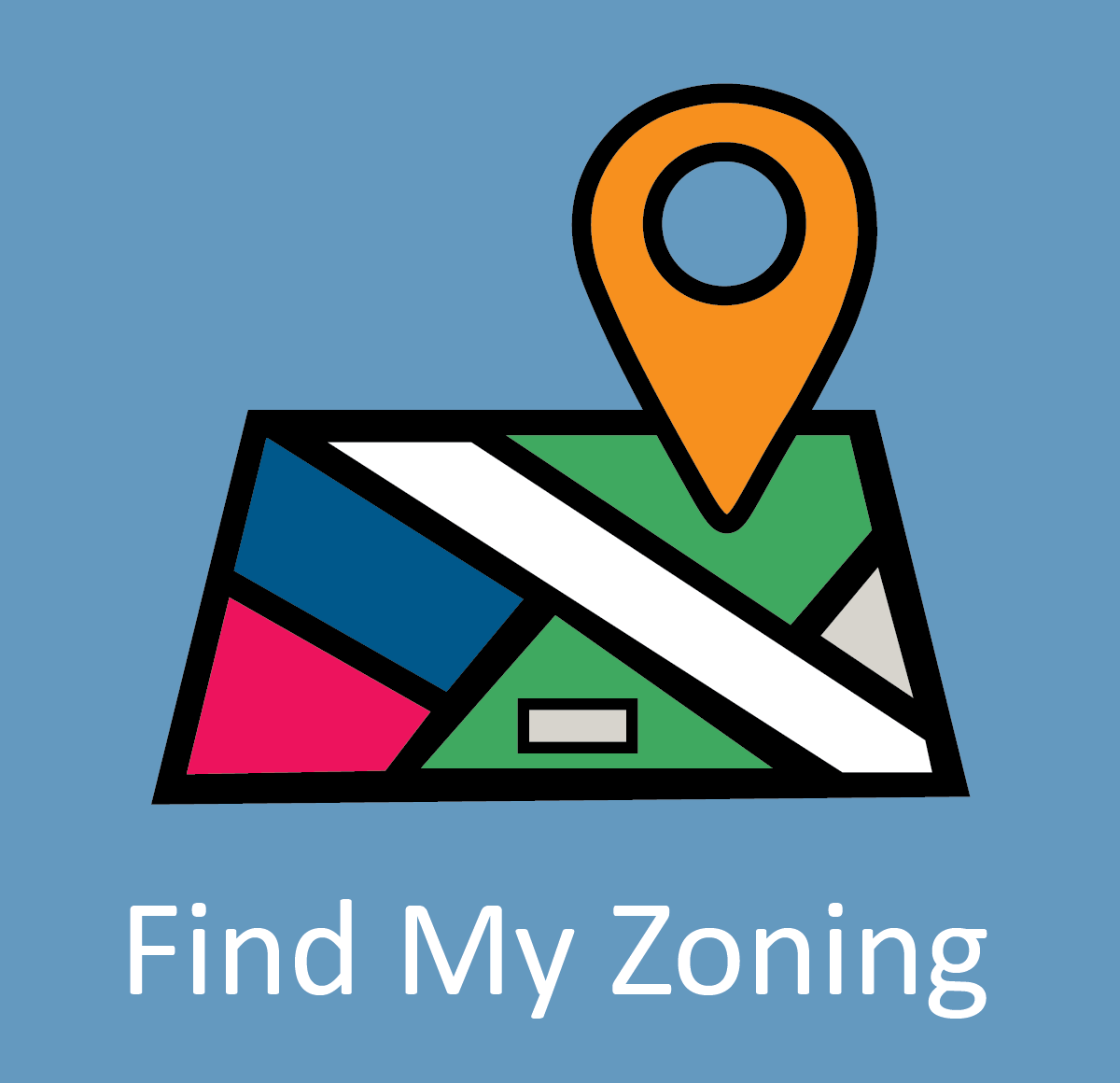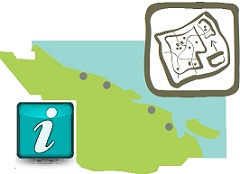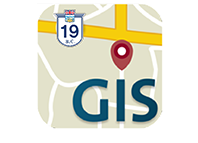Popular Planning Topics
Below are general answers to frequently asked questions. Should you require more assistance, you may submit your question(s) on our Ask Planning page, call the RDN Planning Department at 250-390-6510 or toll-free via the RDN main line at 1-877-607-4111 or submit a question by email at askplanning [at] rdn.bc.ca.
Please Note: This information is not a substitute for legal counsel or professional advice.
Land Use Questions
Setbacks & Height
Rules for siting buildings or structures are primarily outlined in your property’s zoning. However, these rules can vary depending on the property’s features or the intended use of a building. For example, setbacks for structures used to house livestock are detailed in the General Regulations section of the applicable zoning bylaw. Similarly, setbacks related to features such as watercourses or the sea are addressed in the general regulations under Setbacks to Water Features section of the bylaw, as well as in the Flood Hazard Mitigation Bylaw.
Height regulations for buildings or structures are also governed by zoning. However, some features, such as flagpoles, are exempt. These exemptions are outlined in the Height Exemptions section of the General Regulations.
You can access zoning bylaws on the Bylaws and Policies page and determine your property’s zoning using the Find My Zoning Map.
Setbacks to Water Features
Setbacks from water features or the sea are outlined in the Setbacks to Water Features section of the zoning bylaw and are further regulated by the Flood Hazard Mitigation Bylaw, which also imposes additional setbacks and minimum elevation requirements for habitable buildings above the natural boundary. These bylaws can be accessed on the Bylaws and Policies page.
Environmentally sensitive areas may extend beyond the bylaw setbacks and should remain undisturbed. These areas are protected through Development Permit Areas and/or covenants registered on title. Vegetation in these areas plays a crucial role in mitigating hazards and protecting both life and property. Before clearing a property with a water feature or removing/pruning vegetation nearby, it is essential to contact planning staff to understand the applicable Development Permit Area requirements.
To ensure you fully understand how these regulations apply to your property and project, it is highly recommended to consult with planning staff. Questions can be submitted to the planning department through the Ask Planning Inquiries page.
Fences
Whether lot line setbacks and height regulations apply to a fence depends on whether it is classified as a “structure” under the zoning bylaw. Under Bylaw 2500, fences under 2 metres (6.5 feet) in height are excluded from the definition of “structure.” In Bylaw 1285, which governs Electoral Area F, zoning regulations permit fences up to 2.5 metres in height.
For further details, refer to the definition of “structure” in the applicable zoning bylaw, available in the Bylaws and Policies section.
Retaining Walls
Whether lot line setbacks apply to a retaining wall depends on whether it is classified as a “structure” under the applicable zoning bylaw. The definition of “structure” and the regulations for retaining walls differ between Bylaw 2500 and Bylaw 1285. Below is a summary of how these bylaws address retaining walls:
In areas covered by Bylaw 2500
- A retaining wall is considered a structure if its height is 1.2 metres (3.9 feet) or more.
- A retaining wall is also classified as a structure if it includes a fence on top, and the combined height of the wall and fence is 2.0 metres (6.5 feet) or more.
- Bylaw 2500 includes general regulations that clarify how retaining wall height is measured in various scenarios. Please refer to section 3.25 of Bylaw 2500 for more
information.
In areas covered by Bylaw 1285
- A retaining wall is considered a structure if it is 1 metre (3.3 feet) or more in height.
- A retaining wall is also classified as a structure if it holds back 1 metre (3.3 feet) or more of soil.
For more information, refer to the definition of “structure” in Bylaw 1285.
For access to these bylaws, visit the Bylaws and Policies page.
Secondary Suites & Carriage Houses
Secondary suites are permitted in any zone where they are listed as a permitted or accessory use. To determine if a parcel is eligible for a secondary suite, use the Find My Zoning map to look up your property and review the zone description.
Secondary suite regulations differ between Bylaw 2500 and Bylaw 1285.
Bylaw 2500 Secondary Suite Regulations
Bylaw 1285 Secondary Suite Regulations
For access to these bylaws, visit the Bylaws and Policies page.
Shipping Containers
Shipping containers are recognized as structures under Bylaw 2500 and are subject to minimum setback requirements, maximum parcel coverage, and maximum accessory building floor area. They are permitted on a permanent basis in Industrial and Agricultural Zones and in all other zones where parcels are 4,000 m² or larger.
Shipping containers must comply with the regulations outlined in Section 3.26 of Bylaw 2500, which include the following safety provisions:
Prohibited Uses: Storage of flammable materials and inclusion of heat or ignition sources are not allowed.
Ventilation Requirements: Containers must be adequately ventilated to ensure safety. For detailed information on shipping container safety, click here.
In zones where permanent use of shipping containers is not permitted, one container may be temporarily placed to support maintenance or construction activities. Such containers are allowed for the duration of an active building permit and must be removed within 14 days of project completion. Ventilation requirements do not apply to temporary containers.
The maximum number of shipping containers allowed varies depending on the zone, parcel size, and container dimensions. For more details, refer to Section 3.26 of Bylaw 2500, accessible on the Bylaws and Policies page.
Chickens, Horses & Other Animals
Most properties are allowed to keep up to five hens (household poultry). However, the ability to keep roosters (household animals) or horses (household livestock) depends on the size of your property and, in some cases, the zoning regulations.
The rules for keeping such animals are outlined in the General Regulations section of the zoning bylaw for your Electoral Area, under the section titled “Keeping of Animals”. These regulations specify the types and number of animals you can keep, as well as the conditions for their care.
For information on where you can site structures such as coops, chicken runs, or barns on your property, refer to the “Setbacks – Buildings and Structures” section, under “Agriculture and Farm Buildings, Structures, and Uses” in the same zoning bylaw.
For access to the Zoning bylaws, visit the Bylaws and Policies page.
Floodplains
Many properties are located within floodplains, whether oceanic or otherwise. Some of these floodplains are mapped and can be verified using our mapping tool. Other properties are within a designated floodplain as defined in the Flood Hazard Mitigation Bylaw. For example, any property located within 100 metres of an unnamed water feature that meets the bylaw’s criteria is considered part of a floodplain.
The Flood Hazard Mitigation Bylaw regulates the minimum setback distance for buildings or fill (used to elevate a building) from water features. It also specifies the required elevation for habitable spaces within buildings above the water feature. Additionally, Bylaw 2500 and Bylaw 1285 impose watercourse setbacks, which are outlined in the General Regulations section of the applicable bylaw.
For more detailed information, consult planning staff. The RDN Flood Hazard Mitigation Bylaw and the Bylaws are available on the Bylaws and Policies page
Tree Protection
Before removing any trees or vegetation within the Regional District of Nanaimo (RDN), it's important to determine whether your property is located within an Environmental Development Permit Area (DPA) or contains any environmentally sensitive features. If your property is within a DPA, a Development Permit from the RDN may be required before any land alteration, including tree cutting and vegetation removal.
To learn more about the Tools We Use to Protect Trees, or to find out if your property is located within an Environmental Development Permit Area, use our Zoning Map.
Cannabis
The RDN has an established policy regarding applications for Retail and Production Licenses. For more details, please refer to the Policies section on the Bylaws and Policies page.
Cannabis production is permitted on properties within the Agricultural Land Reserve (ALR), provided that provincial and federal regulations are met, along with the additional setback requirements for farm buildings housing cannabis, as outlined in the general regulations of the applicable Zoning bylaw.
Property Information
Addressing
Addresses are assigned by the RDN and managed by our Mapping Team (GIS). Properties without addresses will not be assigned one until a building permit for the principal building is submitted. Temporary addresses, such as those needed for hydro applications, can be assigned but are not permanently added to our mapping system until the building permit is applied for. For more information, please visit the Addressing webpage under GIS/Mapping.
Zoning
Zoning establishes the rules for how you can use your property, specifying allowable uses (e.g., secondary suites, home-based businesses), their location on the property, and the permitted density (e.g., the number of dwelling units allowed). In addition to the specific zone regulations, other sections of the zoning bylaw may govern activities on your property, such as parking, setbacks from watercourses, and home-based business regulations. You can access the applicable bylaw on the Bylaws and Policies page.
To find out your property’s zoning, or the zoning of properties nearby, you can easily look up this information using our Find My Zoning Map or the more detailed Webmap Tool.
ALR - Agricultural Land Reserve
Recent and ongoing changes to the Agricultural Land Commission (ALC) Act and related regulations impact land within the Agricultural Land Reserve (ALR). Property in the ALR is governed by both ALC regulations and RDN bylaws and policies. Before purchasing property in the ALR, developing building plans, clearing vegetation (e.g., brush or trees), adding fill, removing soil, excavating, or establishing or expanding a use—including creating new access points or driveways—it's crucial to familiarize yourself with both ALC and RDN regulations.
For more details on the use of ALR land, contact the ALC, and the RDN Planning Department. The AgriService BC, and the Ministry of Agriculture also offer valuable resources. Visit their websites for further information.
ALC Website | AgriService BC Website | Ministry of Agriculture Website
Plot Plans | Site Plans | Site Surveys
Plot Plans, site plans, or site surveys are typically submitted to the RDN as part of various application processes, most commonly through building permit applications. Since Building Inspection services were not in place across the RDN until 2011, the RDN may not have site plans on file for properties prior to that time.
To access building records, you must either be the property owner or an authorized agent. To apply, fill out a Request for Information Form and submit to Building Inspection Services along with the applicable fee and authorization form (where applicable). To learn more, please refer to the Building Inspection Frequently Asked Questions page.
Alternatively, the RDN’s mapping tools can be used to look at an airphoto of a property with the approximate location of lot lines projected over top. The mapping tool also offer the ability to measure distances and areas. If accuracy is not important, this may serve your purposes.
If you are seeking a site survey of a property, you will likely need to work with a BC Land Surveyor to prepare a site survey on your behalf.
Well & Septic Information
To obtain copies of your well record or septic filing, you will need to contact the relevant Provincial office. For well records, reach out to FrontCounter BC. For septic filings, contact Island Health.
The RDN may or may not have copies available in our building permit records. To apply, fill out a Request for Information Form and submit it to Building Inspection Services along with the applicable fee and authorization form (where applicable). To learn more, please refer to the Building Inspection Frequently Asked Questions page.
Legal Notations | Easements | Covenants
If a legal notation related to a development permit, development variance permit, or temporary use permit appears on the title of a property, you can request a copy from the Planning department. Submit your request through the Ask Planning Inquiries page.
Inquirers seeking access to land title documents such as easements and/or covenants may do so through the BC Land Title Office’s website. The Land Title Office also provides property ownership information, copies of Title, and charges listed on title, such as easements, covenants and building schemes. If you have trouble understanding these documents, you may wish to seek legal counsel on your behalf.
Business in the RDN
Businesses operating within the boundaries of the RDN must be in compliance with zoning. The RDN does not issue business licenses, nor is a business license required to operate a business within its boundaries.
Please note: Operating a business within an incorporated area, such as the City of Nanaimo, City of Parksville, or Town of Qualicum Beach, requires a business license. Please contact these local governments directly for more information.
Home Based Business
Home-based business regulations are outlined in the RDN’s two zoning bylaws, Bylaw 2500 and Bylaw 1285. These regulations define the scope and scale of commercial activities allowed in residential and rural zones, covering aspects such as signage, parking, floor area, and runoff control standards.
Please refer to the home-based business regulations within the applicable zoning bylaw:
Bylaw 2500 Home Based Business Regulations
Bylaw 1285 Home Based Business Regulations
Short-Term Rentals/ Airbnb
Renting your home and/or a secondary suite on a short-term basis is not a permitted residential use. In accordance with the Home-Based Business Regulations of the applicable bylaw, the only short-term rentals permitted on residentially zoned properties are Bed and Breakfasts. A bed and breakfast must be located within the principal dwelling unit, of which the permanent occupant is the registered business owner, and the first meal of the day must be provided. Bed and breakfasts are not permitted on properties that have a secondary suite or carriage house. Please refer to the home-based business regulations within the applicable zoning bylaw:
Bylaw 2500 Home Based Business Regulations
Bylaw 1285 Home Based Business Regulations
There are some commercial zone properties in which ‘Hotel’ and ‘Resort Condominium ’ are permitted uses and which also permit short-term vacation rentals. You can check your property's zoning using our Find My Zoning Map. If you have further questions a Planner can be reached at askplanning [at] rdn.bc.ca (askplanning[at]rdn[dot]bc[dot]ca) or submit a question through the Ask Planning Inquiries page.
Provincial Licences & Approvals
To operate certain businesses within the RDN, licenses and/or approvals from Provincial agencies may be required, such as for liquor and cannabis retail, childcare, or food services. In some cases, the Provincial agency will require the RDN's support for an application before a license can be issued. Applicants for Provincial licenses, such as those for liquor or cannabis retail, must apply to the RDN for review.
Please note that the necessary licenses and approvals may also be required to support a building permit application, particularly for establishing a catering service or childcare facility as a home-based business in a residential building. For further information, refer to the relevant Provincial agency.
Additionally, the RDN has policies in place for certain types of licenses, including those for liquor and cannabis. These policies can be found on the Bylaws and Policies page, linked on the left of the screen.
Land Use Information Letters
Before starting a new commercial business within the RDN, it is advisable to confirm with planning staff that the proposed location is appropriately zoned. You can contact the Planning Department to request this information in writing, if required. Please note, there is a $40 fee for this service.
Applications & Permits
Application Forms
Application forms for planning approvals—such as development permits, development variance permits, zoning amendments, and the home-based business registry—can be accessed on the Application Packages page.
Fees
Planning application fees are outlined in the Development Application, Notification Procedures, and Fees Bylaw, available on the Bylaws and Policies page. For more complex applications, such as subdivisions or zoning amendments, it is recommended to contact planning staff to confirm the applicable fees.
Development Permits
If your property is located within a Development Permit Area (DPA), a development permit may be required before proceeding with activities such as soil disturbance, vegetation removal, land alteration, or subdivision.
DPAs are designated in Official Community Plans to protect or enhance specific community values, such as environmentally sensitive areas or farmland. They also aim to safeguard developments from hazardous conditions and may establish design, lighting, and layout requirements for certain industrial and commercial areas.
To determine which Development Permit Areas apply to your property, please contact planning staff or refer to the development permit area details available through our mapping tool or the Find My Zoning map.
The Development Permit application fee for is $200. Applications packages can be found on the Application Packages page.
Variances
Variances are a tool used to address unique development scenarios, such as sites with challenging topography, hazardous conditions, environmentally sensitive features, or unanticipated commercial uses. Applicants are encouraged to bring their proposals as close as possible to meeting the regulations to minimize the need for a variance. This approach helps reduce potential impacts on neighboring properties, site functionality, and aesthetic values. Applicants should also identify any potential impacts of their variance request and propose measures to mitigate them.
Please note that variance applications are a public process. It is recommended that applicants discuss their plans with neighbors and consider their feedback when tailoring proposals.
There are two ways to apply for a variance:
Development Variance Permit (DVP) or Development Permit with Variance (DPwV)
These applications address general variance requests and are reviewed for alignment with Board Policy B1.5, which outlines criteria for supporting a variance. Planning
staff will prepare a report for the Board of Directors, who will make the final decision on whether to approve the variance based on the staff recommendations.
Board of Variance (BOV)
The BOV meets bi-monthly to consider variance requests based on undue hardship. Undue hardship often arises due to factors such as challenging terrain or
irregularly shaped lots, where adhering to zoning requirements is particularly difficult or impractical.
The application fee for both types of variance requests is $400. Application packages can be found on the Application Packages page.
Temporary Use Permits
If a use is not permitted on a property due to zoning, one potential option is to apply for a temporary use permit. These permits can allow for short-term activities, such as a sales office for a condominium development or a food truck. Temporary use permits can also serve as an opportunity to “test drive” a new use before deciding whether to apply for a permanent zoning amendment.
Temporary use permits are valid for up to three years, with the possibility of applying for an extension of up to an additional three years, subject to Board approval. Contact planning staff to discuss your proposal and to determine if this option aligns with the applicable OCP. A Planner can be reached at askplanning [at] rdn.bc.ca (askplanning[at]rdn[dot]bc[dot]ca) or you can submit a question through the Ask Planning Inquiries page.
Zoning Amendments
An amendment application is required when a property owner wishes to change an existing Official Community Plan (OCP) land use designation or policy, the property zoning or subdivision district, or any other land use regulation contained in RDN bylaws.
Please Note: Where a parcel is designated within a development permit area (DPA) by an OCP and the proposed development is not exempt from the DPA guidelines, the property owner or agent is also required to apply to the Board of Directors for a development permit in addition to the amendment application.



